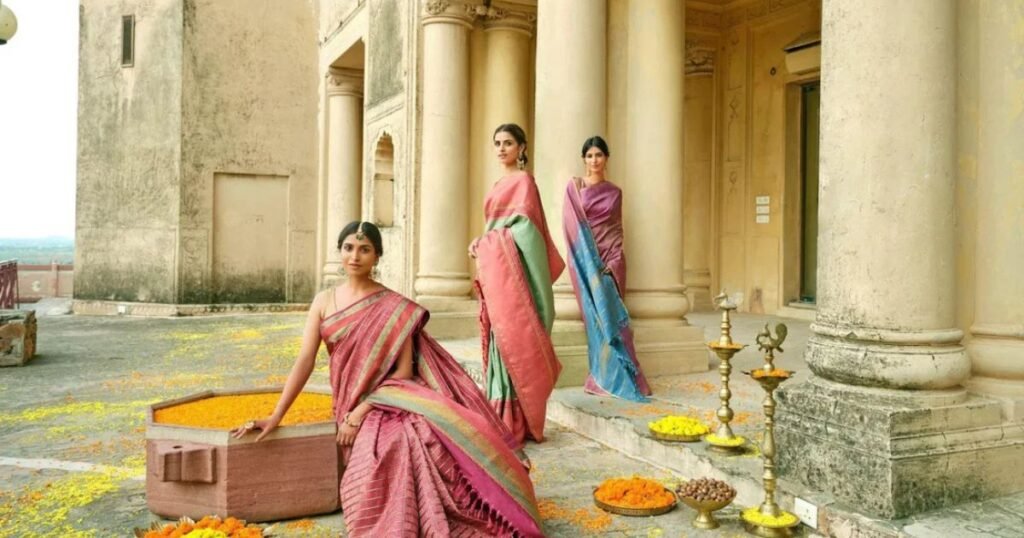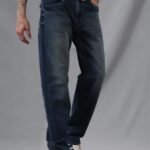
The year 2025 is almost here for the Sustainable Fashion business. This has been the foundation of sustainable fashion, and their clientele appreciates the advantages they provide for the environment. Eco-friendly design is now essential rather than a niche. The way we dress and engage with the climate is changing due to innovative materials and careful consumption. Let’s look at these innovative advancements in the future evolution of sustainability and style.
Why Sustainable Fashion is Crucial in 2025

create clothing that benefits people and the planet.
Key Focus Areas:
- Reducing waste and promoting recycling.
- Using eco-friendly and biodegradable materials.
- Ensuring ethical labor practices.
Embracing sustainable fashion trends for 2025: environmentally responsible looks can have a big impact. Let’s now discuss the trends that are changing the fashion industry.
1. Upcycled and Recycled Materials

For sustainable fashion, reusing and recycling are essential. Generally speaking, companies are using materials to create distinctive, high-end products. This leads to a depletion of demand for additional resources and waste.
Key Features:
- Transforming fabric scraps and old garments into new pieces.
- Using recycled plastics for items like shoes and bags.
Benefits:
- Reduces landfill waste.
- Supports creative, one-of-a-kind designs.
Pro Tip: Identify firms offering upcycled collections or try them yourself.
2. Plant-Based Fabrics

Eco-friendly sustainable fashion is being transformed by plant-based textiles. Bamboo, hemp, and organic cotton are eco-friendly substitutes for traditional textiles. These textiles are biodegradable and use fewer resources.
Key Features:
- Grown without harmful pesticides.
- Renewable and sustainable.
Benefits:
- Comfortable and breathable clothing.
- Reduces environmental impact.
Pro Tip: Identify certifications (for example the GOTS, Global Organic Textile Standard) in order not to sacrifice the sustainability of your apparel.
3. Circular Fashion

Circular sustainable fashion emphasizes extending the life of garments. Resale, rental, and repair of clothing to decrease waste and production overconsumption is involved.
Key Features:
- Clothing rental platforms.
- Second-hand and vintage shopping.
Benefits:
- Cost-effective and environmentally friendly.
- Encourages mindful consumption.
Pro Tip: Explore thrift stores and rental services for unique finds and avoid fast fashion impulses.
4. Minimalist Wardrobes

Minimalism will become popular in 2025. Capsule wardrobes emphasize quality over quantity and include pieces that go well together.
Key Features:
- Important attributes:
- Timeless designs in neutral tones
- .Multi-functional clothing items.
Benefits:
- Reduces clutter and promotes intentional shopping.
- Saves money in the long run.
Pro Tip: Get some quality items that are fashionable and will never go out of fashion.
5. Vegan and Cruelty-Free Fashion

When it comes to, technology is new. These advancements, which are being driven by 3D printing and artificial intelligence (AI) design tools, are helping manufacturers optimize their production and waste flow.
Key Features:
- Animal-free materials.
- Ethical production methods.
Benefits:
- Reduces harm to animals and the environment.
- Offers stylish, durable options.
Pro Tip: Check for certifications such as PETA-approved vegan labels.
6. Technology-Driven Sustainability

Technology is a game-changer in sustainable fashion. Fueled by both artificial intelligence (AI) design tools as well as by 3D printing, these advancements are enabling brands to optimize waste flow and production processes.
Key Features:
- Digital fitting rooms to reduce returns.
- AI predicts trends to prevent overproduction.
Benefits:
- Enhances efficiency and sustainability.
- Reduces environmental footprint.
Pro Tip: Support brands utilizing technology for sustainable practices.
7. Natural Dye Techniques

Synthetic dyes are the leading pollutant of the sustainable fashion industry. Natural dyeing techniques using plants, roots, and minerals are on the rise again.
Key Features:
- Non-toxic and biodegradable dyes.
- Unique, earthy color palettes.
Benefits:
- Reduces water contamination.
- Creates long-lasting, vibrant hues.
Pro Tip: Select items that are dyedesigned with natural or plants.
8. Community-Led Initiatives

Community-based activities (such as clothing swap and repair café) enable individuals to engage in sustainable actions.
Key Features:
- Events that promote sharing and reusing.
- Workshops teaching repair and upcycling skills.
Benefits:
- Builds community connections.
- Reduces clothing waste.
Pro Tip: Join a local swap party or have a party in your town.
9. Transparency and Ethical Practices

Consumers are demanding transparency from brands. Detailed information about SCMs is used in order to enforce ethical labor and permanence in a supply chain.
Key Features:
- QR codes revealing garment origins.
- Public reports on environmental impact.
Benefits:
- Builds consumer trust.
- Encourages accountability.
Pro Tip: Research brands’ transparency policies before making purchases.
10. Biodegradable and Compostable Clothing

Zero-waste closets are being made possible by compostable sustainable fashion. Branded, material suppliers are now making garments that biodegrade by the end of their product life.
Key Features:
- Made from 100% natural fibers.
- Compostable after use.
Benefits:
- Eliminates long-term waste.
- Reduces reliance on synthetic materials.
Pro Tip: Actively encourage companies to invest in biodegradable vs. only recycled sustainable fashion product fabrics, in order to close the fashion waste loop.
Conclusion
Sustainable fashion trends for 2025: Environmentally and industrially sustainable yesterdays have been given a new shape by eco-conscious aesthetics. These advances underscore consumerism, the morality of production, and material innovations. Through the use of upcycled fabric and plant fiber fabric and the use of participatory community projects, you can have a good impact. Sustainable fashion trends for 2025: Practiced eco-friendly fashions show that it is possible to be stylish and also non-damaging to the environment. By working together, we can transform fashion into a tool for good.
FAQs
1. What are the key benefits of sustainable fashion?
Green fashion minimizes its environmental footprint, promotes fair labor trade, and allows considerate consumption. It’s a win for the planet and future generations.
2. How can I start building a sustainable wardrobe?
Firstly, high-quality durable materials need to be invested in. Embrace second-hand shopping, upcycling, and minimalist fashion trends.
3. What materials are considered eco-friendly in 2025?
Paper and fabric (organic cotton, hemp, bamboo, recycled textiles) are green. They use fewer resources and have a smaller environmental footprint.
4. How does circular fashion help the environment?
Circular fashion enhances the life span of garments through rental, resale, and repair, consequently minimizing overproduction and waste in the fashion sector.
5. Why is transparency important in sustainable fashion?
Transparency ensures ethical practices and sustainable sourcing. It builds trust and encourages accountability from fashion brands.






